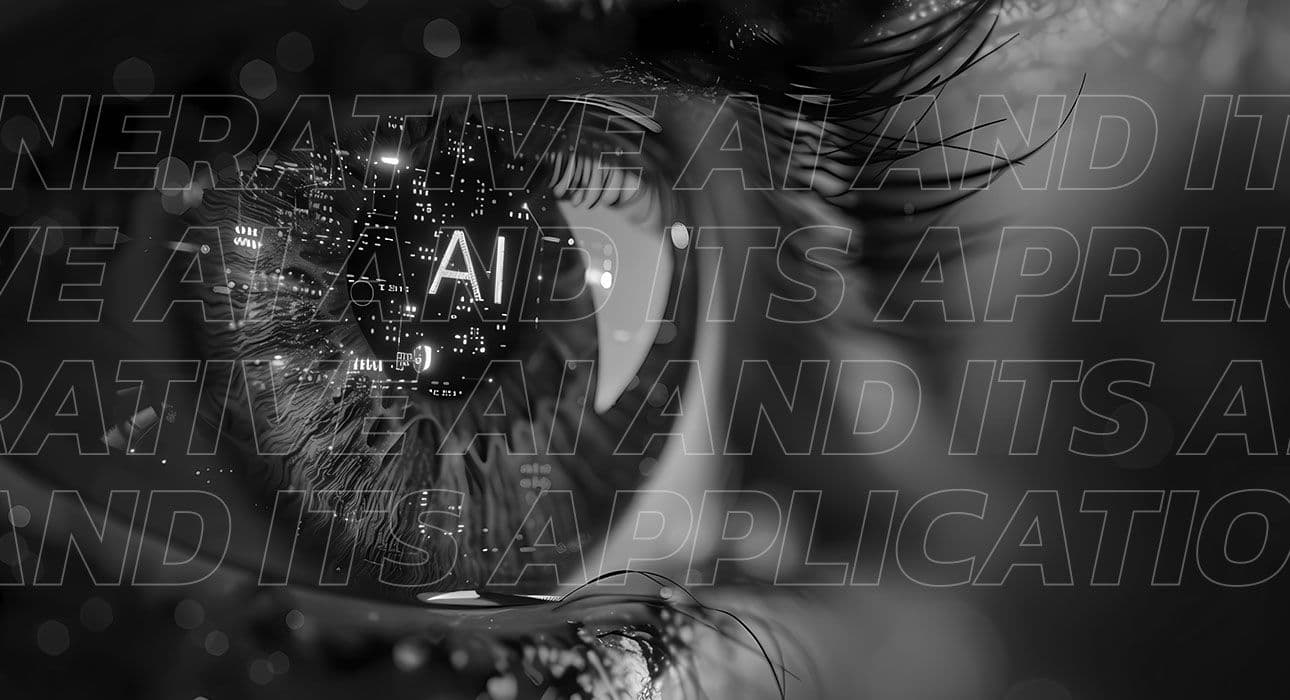
Support center +971 50 421 0005
Get in touch
- +971 50 421 0005
- [email protected]
- Al Reem Space,3706 Tamouh Tower, Abu Dhabi, UAE
- CN-5177413


Design, Marketing 23 Jan 2025

The Rise of Generative AI: Transforming Creativity and Work
Historically, innovation in craftsmanship relied exclusively on human talent. The idea of machines contributing to creative fields such as art, design, fashion, writing, and music was once unimaginable. The prospect of machines generating content indistinguishable from human work seemed beyond reach.
Fast forward to today, and that fantasy is our reality. Tools like ChatGPT, DALL-E, GitHub Copilot, Bard (Gemini), MidJourney, Synthesia, and many others have revolutionized industries. These generative AI systems are no longer just mimicking creativity but reshaping how we work, think, and communicate.
Generative AI’s Impact on the World
Industry projections indicate that generative AI could increase global GDP by 7% and replace up to 300 million knowledge-worker roles. These figures underscore the transformative impact of generative AI on the future of work and productivity.
Nowadays, tools powered by generative AI have become indispensable across industries. Whether it’s generating flawless text, designing stunning visuals, creating lifelike audio, or even writing code, these technologies are competing with—and complementing—human creativity.
Employees across various sectors have admitted that generative AI has become an essential part of their workflow. It enables them to perform their tasks more professionally and efficiently, saving time and improving outcomes.
What Is Generative AI?
Generative AI encompasses advanced computational techniques capable of producing original and meaningful content—including text, images, videos, and audio—by analyzing and learning from extensive datasets.
Why It Matters?
Generative AI transcends mere replication of human work; it empowers individuals and organizations to achieve more. By automating repetitive tasks and enhancing creativity, it is reshaping problem-solving and driving innovation.
Generative AI: A Shift in the Role of Technology
Generative AI has achieved widespread success due to the impact of advanced machine learning architectures, such as deep neural networks. These innovations have revolutionized how artificial intelligence is utilized in today’s world.
Beyond the technical jargon, generative AI systems are built on a robust infrastructure. This includes the model, data processing capabilities, and user-friendly interfaces that make these systems accessible and practical for various applications.
A New Perspective on AI
This evolution in AI has fundamentally changed how humans perceive its role. In the past, machines were primarily seen as tools for analyzing data and supporting decision-making tasks. However, modern AI has moved far beyond this passive role. It has become a creative and generative force, assisting humans in their work and combining diverse elements in innovative ways.
Information technology tools, once regarded as passive instruments, have evolved into active collaborators. Today, they work alongside humans, driving creativity and enabling innovation on an unprecedented scale.
The Evolving Dynamics of Human-AI Interaction
The interaction between humans and AI has long been considered complex, with critics often viewing it through a hierarchical lens. But how can AI truly assist managers in decision-making?
The process begins with AI analyzing incoming data, extracting insights, and addressing key issues. It then interprets human intentions, providing feedback that anticipates and presupposes subsequent prompts. This dynamic creates a continuous feedback loop, enhancing decision-making through collaboration between human judgment and AI-driven analysis.
Hybrid Intelligence: The Power of Collaboration
This interplay between humans and AI paves the way for hybrid intelligence—the seamless integration of human expertise with AI’s computational power. By leveraging the unique strengths of both, hybrid intelligence has the potential to redefine how we approach problem-solving and decision-making.
The Importance of Human-AI Interaction Models
To fully realize the benefits of this partnership, it’s essential to develop human-AI interaction models. These models serve two critical purposes:
-
Guiding Behavior: They explain and structure the interaction between humans and AI systems, ensuring that collaboration is effective and efficient.
-
Ensuring AI Agency: They foster the responsible development and deployment of AI, ensuring that it functions as an ethical and valuable partner in various applications.
By understanding and optimizing the relationship between humans and AI, we can unlock new levels of innovation and productivity while maintaining the balance of agency and accountability.
Are Generative AI Outputs Always Correct?
Not necessarily. The quality of content generated by AI depends heavily on the data it is trained on. Just like raising a child in a healthy and well-educated environment leads to positive contributions to society, training an AI model on accurate, high-quality data yields reliable results. Conversely, poor input data leads to flawed outputs.
Generative AI models rely on probabilistic algorithms to make inferences. When the input data is accurate and well-structured, the results are often clear and dependable. However, there are instances where generative AI produces content that is not grounded in facts or evidence but instead stems from its assumptions or biases.
The Problem of Hallucination in Generative AI
This phenomenon, known as hallucination, occurs when the AI generates text or content that appears semantically or syntactically plausible but is nonsensical or incorrect. These errors can range from minor inaccuracies to completely fabricated information, highlighting the importance of understanding and addressing the limitations of AI systems.
To mitigate these issues, it’s crucial to:
-
Ensure high-quality and diverse training data.
-
Implement rigorous validation and testing processes.
-
Use AI-generated content as a tool for support, not as the sole source of truth.
By taking these steps, we can better harness the potential of generative AI while minimizing its pitfalls.
Generative AI and Bias: A Double-Edged Sword
Research in the field of generative AI has consistently highlighted a critical issue: societal biases embedded within these systems. These biases often stem from the human-generated content used to train the models and the alignment processes involved in their development.
Why Does Bias Occur in Generative AI?
The root of bias lies in the quality and composition of training data. AI models learn patterns and relationships from vast datasets that reflect human behavior and language. If these datasets contain biased, toxic, or stereotypical content, the AI inevitably absorbs and reproduces those same biases.
However, training data is not the sole contributor to bias. Human involvement in the development process—including data selection, labeling, and algorithm design—can also introduce or exacerbate biases.
The Impact of Bias
Biased generative AI can have far-reaching consequences, including:
-
Amplifying harmful stereotypes related to gender, sexual orientation, political beliefs, or religion.
-
Replicating toxic language or offensive content.
-
Reinforcing existing societal inequities through skewed outputs.
However, Generative AI has incredible potential, but ensuring its fairness and inclusivity is essential to maximizing its benefits while minimizing its risks.
Conclusion
Generative AI has revolutionized the way humans approach their tasks, making them more efficient and manageable. Whether it’s simplifying complex analyses from reports or designing data-driven marketing campaigns, generative AI empowers individuals and organizations to craft impactful messages tailored to their audience.
Generative AI empowers organizations to achieve better results by enabling real-time decision-making—a process that traditionally demanded significant time and effort. By eliminating these barriers, generative AI accelerates informed decision-making, optimizing workflows across diverse industries.
As a versatile assistant, generative AI not only enhances productivity but also helps uncover diverse audience preferences, allowing businesses to connect with their customers on a deeper, more emotional level. Unlike traditional methods, generative AI ensures messages resonate with the heart before they are heard, creating meaningful and lasting impressions.
Embrace generative AI to achieve outstanding results, impactful outcomes, and a profound understanding of your audience. It’s the tool for modern innovators ready to redefine success.
Ready for Transformation?



